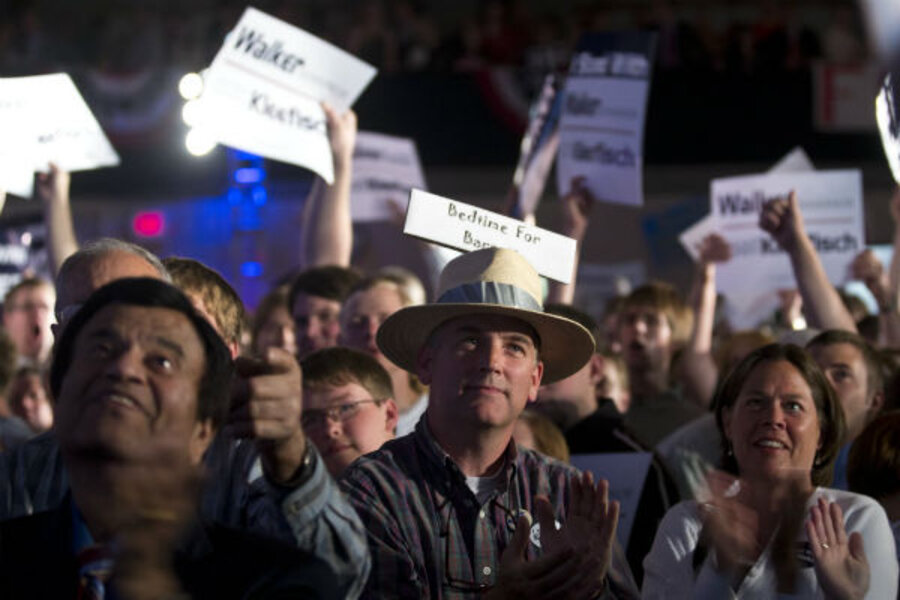Wisconsin is the second Upper Midwest state with high voter turnout – 60.93 percent over the past six elections – and the only battleground state on this list.
The state shares similar characteristics to its regional neighbors (like South Dakota) with a history of political participation and competitive state and national races, says Eric Ostermeier of the University of Minnesota.
Wisconsin’s history of civic engagement began with the Progressive Party, which supported farm and labor union rights and generated numerous close elections between the 1920s and 1940s, Dr. Ostermeier says.
Political participation and voting has become almost an expected behavior.
“People want to live up to the expectation for themselves or community norms,” says Michael Slater of Project Vote. “They think, 'voting is what we do in this community.' ”
Another reason for Wisconsin's high voter turnout: allowing new voters to register and vote on Election Day. Same-day registration is the biggest factor in generating high voter turnout as it generates a possible voter increase of 10 percent, Ostermeier says.
Nine states have same-day registration, and some opponents of the policy say it could increase voter fraud, according to Project Vote.
Same-day registration benefits students and low-information voters – those who don't pay attention early in the campaign, says Ostermeier.
“Having the ability to vote at the last minute helps the process if one believes that democracy is as many people being able to vote as possible,” he says.
Wisconsin’s high voter turnout is also a result of intensely competitive elections in recent years. Most notably 2010, when the state Senate and governor’s office switched to Republican control. In the presidential elections since 1998, Wisconsinites voted Democratic. But several Republican rising stars are gaining more support in the state and on the national political stage: Gov. Scott Walker won a competitive recall election in June and Rep. Paul Ryan is the vice presidential candidate.








